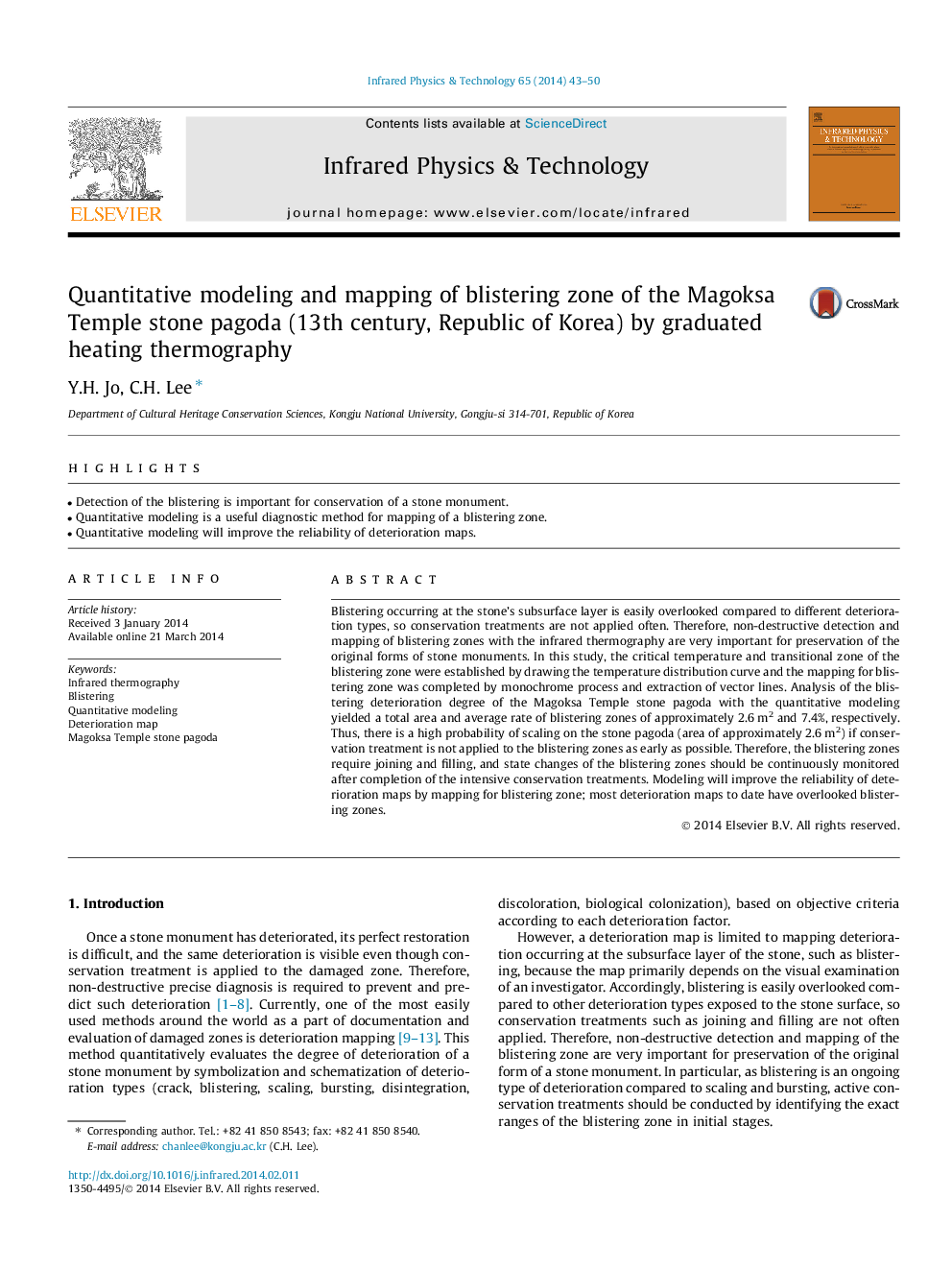| کد مقاله | کد نشریه | سال انتشار | مقاله انگلیسی | نسخه تمام متن |
|---|---|---|---|---|
| 1784348 | 1524121 | 2014 | 8 صفحه PDF | دانلود رایگان |

• Detection of the blistering is important for conservation of a stone monument.
• Quantitative modeling is a useful diagnostic method for mapping of a blistering zone.
• Quantitative modeling will improve the reliability of deterioration maps.
Blistering occurring at the stone’s subsurface layer is easily overlooked compared to different deterioration types, so conservation treatments are not applied often. Therefore, non-destructive detection and mapping of blistering zones with the infrared thermography are very important for preservation of the original forms of stone monuments. In this study, the critical temperature and transitional zone of the blistering zone were established by drawing the temperature distribution curve and the mapping for blistering zone was completed by monochrome process and extraction of vector lines. Analysis of the blistering deterioration degree of the Magoksa Temple stone pagoda with the quantitative modeling yielded a total area and average rate of blistering zones of approximately 2.6 m2 and 7.4%, respectively. Thus, there is a high probability of scaling on the stone pagoda (area of approximately 2.6 m2) if conservation treatment is not applied to the blistering zones as early as possible. Therefore, the blistering zones require joining and filling, and state changes of the blistering zones should be continuously monitored after completion of the intensive conservation treatments. Modeling will improve the reliability of deterioration maps by mapping for blistering zone; most deterioration maps to date have overlooked blistering zones.
Journal: Infrared Physics & Technology - Volume 65, July 2014, Pages 43–50